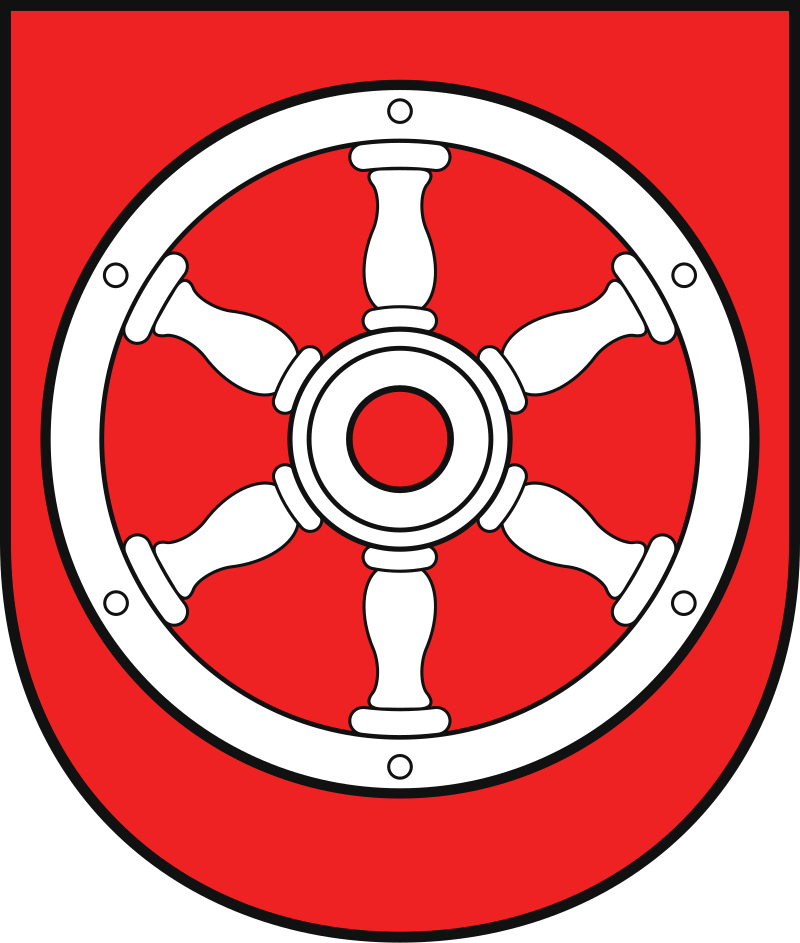(Settlement) Erfurt Hanseatic City

- Coat of arms/Flag
- General Alignment –
- Settlement size – Large city
- Corruption +; Crime +; Economy +; Law +; Lore +; Society +
- Qualities –
- Danger +
- Demographics – 10% dwarven
- Country-
- Government – Council
- Legislature –
- Population – 20,000
- Places of interest – University of Erfurt
- Current Ruler –
- Other Notable residents – Ulrich von Hutten, Helius Eobanus Hessus and Justus Jonas.
- Marketplace
- Base Value ; Purchase Limit ; Spellcasting
- Minor Items ; Medium Items ; Major Items

Erfurt is an important trading town because of its location. Together with the other five Thuringian woad towns of Gotha, Tennstedt, Arnstadt and Langensalza it is the centre of the German woad trade, which made those cities very wealthy. Erfurt is the junction of important trade routes: the Via Regia was one of the most used east–west roads between France and Russia (via Frankfurt, Erfurt, Leipzig and Wrocław) and another route in the north–south direction was the connection between the Baltic Sea ports (e. g. Lübeck) and the potent upper Italian city-states like Venice and Milan.
Both the Emperor and the Electorate of Mainz held some privileges in Erfurt. The German kings had an important monastery and the Archbishops of Mainz collected taxes from the people. Three hunderd years ago some people became free citizens by paying the annual “Freizins” (liberation tax), which marked a first step in becoming an independent city. Later as a sign of more and more independence, the citizens built a city wall around Erfurt. After Two hunderd years ago, independence was fulfilled and a city council was founded. In the following decades, the council bought a city-owned territory around Erfurt which consisted at its height of nearly 100 villages and castles and even another small town (Sömmerda). Erfurt became an important regional power between the Landgraviate of Thuringia around, the Electorate of Mainz to the west and the Electorate of Saxony to the east. Erfurt is allied with the two other major Thuringian cities (Mühlhausen and Nordhausen) in the Thuringian City Alliance and the three cities joined the Hanseatic League together. The city had a population of 20,000 making it one of the largest in Germany. A second and higher city wall was established and the first city fortress was built on Cyriaksburg hill in the southwestern part of the town.
The dwarven community of Erfurt was founded in the 11th century and became, together with Mainz, Worms and Speyer, one of the most influential in Germany. During the wave of Black Death Jewish persecutions across Europe, the Jews of Erfurt were rounded up, with more than 100 killed and the rest driven from the city. Only a few years after 1349, the Jews moved back to Erfurt and founded a second community, which was disbanded by the city council in 1458.
The University of Erfurt was founded. Together with the University of Cologne it was one of the first city-owned universities in Germany. The university has quickly became a hotspot of German cultural life in Renaissance humanism with scholars like Ulrich von Hutten, Helius Eobanus Hessus and Justus Jonas.

 Buy me a coffee
Buy me a coffee